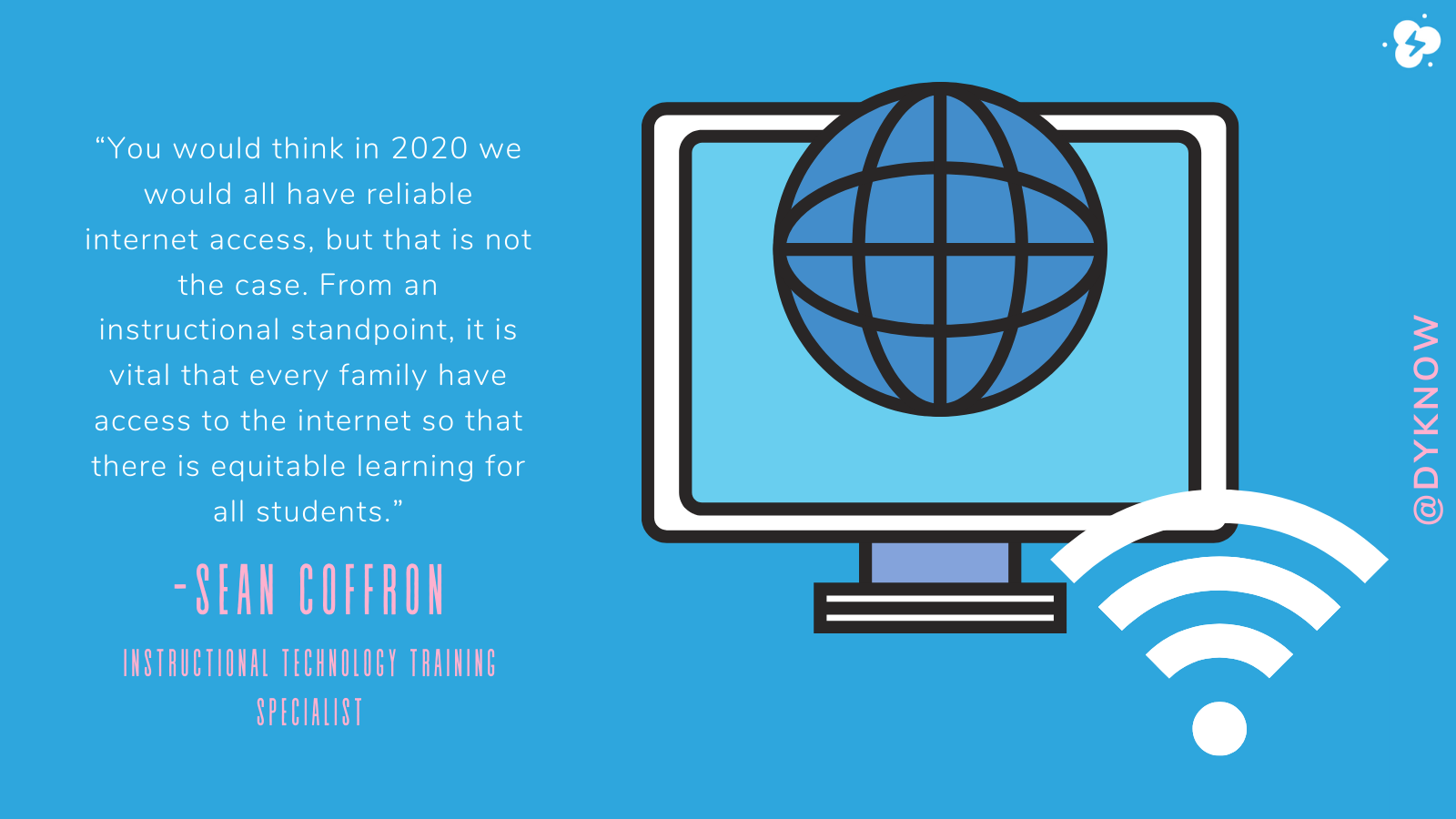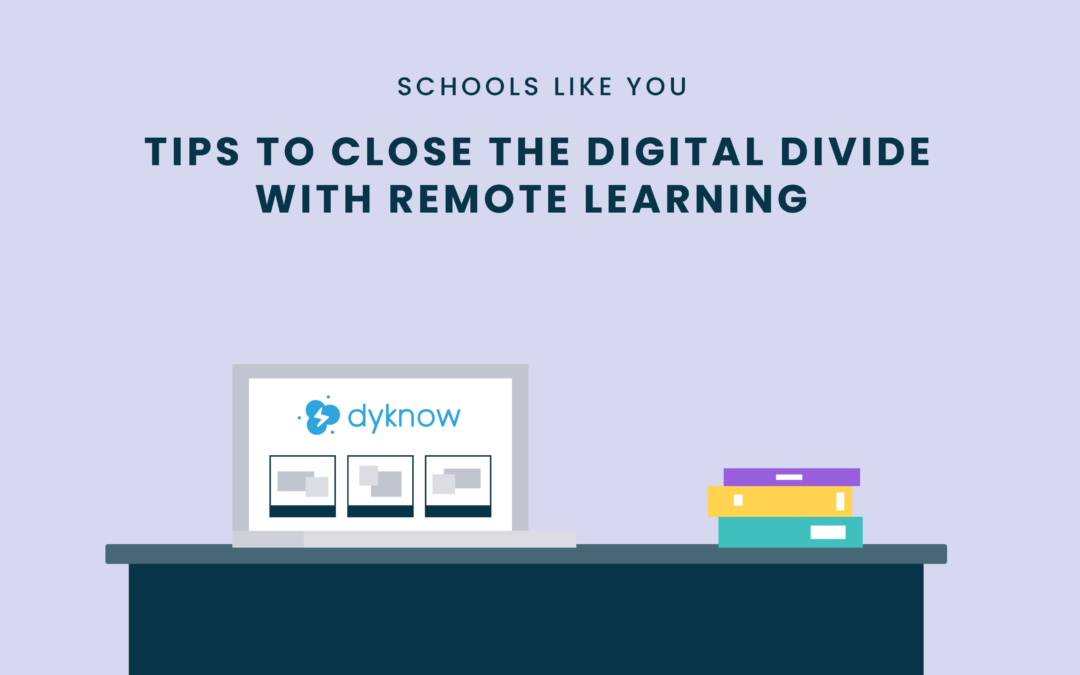The digital divide is at a crossroads within the educational world. At this moment whilst schools across the country are implementing technical and virtual instruction, the digital divide can either increase or decrease. Educators have a great opportunity to combat an ongoing issue by providing the best possible alternatives for students to attain educational equity. We recently spoke with Instructional Technology Training Specialist, Sean Coffron, to find out how his school is working to close the digital divide with remote learning.
What is the Digital Divide?
The digital divide is a concept that acknowledges the increasing divide between access to technology and learning for students. As Education Magazine defines it, “Digital divide is a term generally referred to in the education sector to showcase inequalities in physical access to technology as well as the imbalances in resources and skills needed to effectively participate as a digital citizen.” K-12 education is heading in a technological direction with the circumstances that COVID-19 has presented. Because of this, some students will not be able to get the same level of quality of education as others, based on their home or financial situation. As educators, without fully knowing every student’s situation outside of the classroom, it is essential to understand that not every student is the same or has the same access to the internet or special technology as others. Schools need to put in place plans for how they will provide excellent education and access to all students, no matter their situation, to close the digital divide.
Tips to Close the Digital Divide with Remote Learning
Many schools have been able to provide 1:1 devices to students during this time which shrinks the divide in terms of access to technology. However, we learned from Sean Coffron that although it is a huge success to provide a device to every student, the issue of access to the internet still needs to be addressed.
After speaking with Sean Coffron about his experiences with remote learning and what he has contributed to closing the digital divide, we gathered these 3 tips to help you make an impact to further close the digital divide.
1. Establish a Great Administration Team
Like any school, the foundation of a successful school is a great administration team. This same idea goes along with closing the digital divide. Administrators need to be making plans to accommodate student, parent, and teacher needs in the era of remote learning.
Sean Coffron stated that many teachers were not enthusiastic about the transition to remote learning in the beginning. He explained how one thing that was unforeseen in the Spring was the angst around using their LMS, Schoology. His school has been using this LMS for over 5 years, but with remote learning, the way the LMS was used has been completely restructured. An administrator’s responsibility in this situation is to lead by example and get their staff enthusiastic about learning new things and the endless possibilities these new skills can present for themselves and their students. In the end, this was a huge benefit for their administration and staff overall.
2. Have Alternatives
Sean described their biggest unanticipated challenge was the lack of connectivity for students. His school was able to provide each student with their own device to take home and continue school remotely. Sean stated, “we learned very quickly that even though students might have devices, they might not have access to the internet.” His school was able to come together to provide a number of hotspots for their students who did not have access to the internet at no extra cost so that they could continue their education alongside the rest of their classmates. Many people had similar worries about this situation, and the urgency of the issue made for the resolution to be quick and easy. This is one of many solutions that schools have put in place to accommodate every single student and family.
Sean explains how he believes that there is a disparity between what is said by the media and research, and what is actually happening with the digital divide. In communities that have the impression that every citizen has access to technology, that might not be true in all cases. He states, “You would think in 2020 we would all have reliable internet access, but that is not the case. From an instructional standpoint, it is vital that every family have access to the internet so that there is equitable learning for all students.”

3. Technical support
Schools have a higher responsibility to provide extra technical support now that many schools are all remote. Students can no longer just walk down the hall to get help with technology; they now have to reach out in a different way. Sean’s role has changed to where now students can receive technical support within 24 hours by getting in contact with Sean and other members of his technology team. Teachers and students are learning about the technology alongside each other and the support provided by a technical team is crucial for the best possible quality of education during remote learning.
Closing the digital divide should be a top priority for schools across the nation to further expand the knowledge and skills of the next generation of teachers and leaders. If all teachers work together during this time to do their part and make some small impact can change the fate of many students in the future.
Listen to the full conversation with Sean Coffron on our Tackling Tech Podcast!
On this episode of Tackling Tech Podcast, powered by Dyknow, Brett McGrath invites back Sean Coffron, Instructional Technology Training Specialist, back to talk about digital citizenship, classroom management, and closing the digital divide. Sean shares his predictions about the upcoming school year and the future of digital education.
Start teaching confidently with Dyknow for free!
Latest blog articles

Dyknow 2021 Year In Review
In addition to web browser updates and bug fixes, Dyknow released several major product updates, new features and enhancements. Check out Dyknow’s 2021 Year in Review!

The Classroom Management Tool that’s Rated #1 in Satisfaction on G2
K-12 Administrators across the world trust G2 as the #1 platform to find, research, and choose EdTech tools that solve the most pressing problems their teachers are experiencing. In G2's Fall 2021 Reports, Dyknow was once again rated #1 in overall Satisfaction out of...

Bringing Diversity and EdTech to the English Classroom
On this episode of Tackling Tech, Tierra Leustig interviews Scott Bayer about being an anti-racist teacher, diversifying reading lists, creating inclusive learning environments, and leveraging ed-tech in non-technical ELA classrooms. Scott Bayer is a High School...

